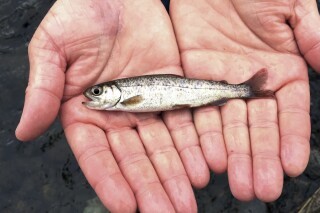#Economic benefits of farming
Text
The Macadamia Shell Controversy in Kenya
The Macadamia Shell Association of Kenya has raised concerns about the potential importation of raw macadamia nuts from other countries. The association argues that this move could negatively impact local industries that rely on macadamia shells as a fuel source.
According to the association, macadamia shells are a crucial byproduct of the macadamia processing industry in Kenya. These shells are…
#air pollution#carbon emissions#diversification#domestic industries#economic benefits#environmental impact#environmental regulations#foreign exchange earnings#fuel source#government regulation#greenhouse gases#import ban#job creation#kenya#land use#macadamia industry#macadamia nuts#macadamia shell association#macadamia shells#market risk#particulate matter#pollution control measures#quality standards#raw macadamia nuts#renewable energy#research and development#Small-scale farmers#sustainable farming practices#sustainable fuel#trade regulations
1 note
·
View note
Text
"It is 70 years since AT&T’s Bell Labs unveiled a new technology for turning sunlight into power. The phone company hoped it could replace the batteries that run equipment in out-of-the-way places. It also realised that powering devices with light alone showed how science could make the future seem wonderful; hence a press event at which sunshine kept a toy Ferris wheel spinning round and round.
Today solar power is long past the toy phase. Panels now occupy an area around half that of Wales, and this year they will provide the world with about 6% of its electricity—which is almost three times as much electrical energy as America consumed back in 1954. Yet this historic growth is only the second-most-remarkable thing about the rise of solar power. The most remarkable is that it is nowhere near over.
To call solar power’s rise exponential is not hyperbole, but a statement of fact. Installed solar capacity doubles roughly every three years, and so grows ten-fold each decade. Such sustained growth is seldom seen in anything that matters. That makes it hard for people to get their heads round what is going on. When it was a tenth of its current size ten years ago, solar power was still seen as marginal even by experts who knew how fast it had grown. The next ten-fold increase will be equivalent to multiplying the world’s entire fleet of nuclear reactors by eight in less than the time it typically takes to build just a single one of them.
Solar cells will in all likelihood be the single biggest source of electrical power on the planet by the mid 2030s. By the 2040s they may be the largest source not just of electricity but of all energy. On current trends, the all-in cost of the electricity they produce promises to be less than half as expensive as the cheapest available today. This will not stop climate change, but could slow it a lot faster. Much of the world—including Africa, where 600m people still cannot light their homes—will begin to feel energy-rich. That feeling will be a new and transformational one for humankind.
To grasp that this is not some environmentalist fever dream, consider solar economics. As the cumulative production of a manufactured good increases, costs go down. As costs go down, demand goes up. As demand goes up, production increases—and costs go down further. This cannot go on for ever; production, demand or both always become constrained. In earlier energy transitions—from wood to coal, coal to oil or oil to gas—the efficiency of extraction grew, but it was eventually offset by the cost of finding ever more fuel.
As our essay this week explains, solar power faces no such constraint. The resources needed to produce solar cells and plant them on solar farms are silicon-rich sand, sunny places and human ingenuity, all three of which are abundant. Making cells also takes energy, but solar power is fast making that abundant, too. As for demand, it is both huge and elastic—if you make electricity cheaper, people will find uses for it. The result is that, in contrast to earlier energy sources, solar power has routinely become cheaper and will continue to do so.
Other constraints do exist. Given people’s proclivity for living outside daylight hours, solar power needs to be complemented with storage and supplemented by other technologies. Heavy industry and aviation and freight have been hard to electrify. Fortunately, these problems may be solved as batteries and fuels created by electrolysis gradually become cheaper...
The aim should be for the virtuous circle of solar-power production to turn as fast as possible. That is because it offers the prize of cheaper energy. The benefits start with a boost to productivity. Anything that people use energy for today will cost less—and that includes pretty much everything. Then come the things cheap energy will make possible. People who could never afford to will start lighting their houses or driving a car. Cheap energy can purify water, and even desalinate it. It can drive the hungry machinery of artificial intelligence. It can make billions of homes and offices more bearable in summers that will, for decades to come, be getting hotter.
But it is the things that nobody has yet thought of that will be most consequential. In its radical abundance, cheaper energy will free the imagination, setting tiny Ferris wheels of the mind spinning with excitement and new possibilities.
This week marks the summer solstice in the northern hemisphere. The Sun rising to its highest point in the sky will in decades to come shine down on a world where nobody need go without the blessings of electricity and where the access to energy invigorates all those it touches."
-via The Economist, June 20, 2024
#solar#solar power#solarpunk#hopepunk#humanity#electricity#clean energy#solar age#renewables#green energy#solar energy#renewable energy#solar panels#fossil fuels#good news#hope#climate change#climate hope
1K notes
·
View notes
Text
5 Practical Ways to Use Wind Energy for a Sustainable Future
Wind energy is one of the most promising sources of renewable energy. It is a clean and sustainable source of energy that has the potential to significantly reduce our dependence on fossil fuels. While wind turbines for electricity generation are the most common application of wind energy, there are many other practical ways of using this energy source. In this blog post, we will explore some of…

View On WordPress
#Empowering Remote Communities with Sustainable Energy Solutions Using Wind Power#Exploring the Potential of Wind-Powered Vehicles for Clean Transportation#How to Use Wind Energy in Practical Applications for a Sustainable Lifestyle#Innovative Ways to Harness Wind Energy for Cost-Effective Solutions#Maximizing Efficiency and Sustainability with Wind Energy Technology#Practical Wind Energy Solutions: From Small-Scale Turbines to Large-Scale Wind Farms#Reducing Carbon Footprint with Wind-Powered Streetlights and Water Pumps#Revolutionizing Energy Consumption with Practical Wind Energy Applications#Sustainable Solutions for Water Scarcity with Wind-Powered Desalination Plants#The Environmental and Economic Benefits of Wind Energy for Practical Applications#wind energy#wind power
0 notes
Text
New job reveal: I'm doing economic and climate policy with the Quakers, both national and international. In this role I'll be writing fewer investigative reports, but more policy explainers.
For example, here's my latest piece on why you (yes, you, dear reader), should care about the debate over agriculture going on right now in congress.
Everyone should have the food and nutrition they need to thrive. But today, people around the world face hunger in their daily lives, including 47 million in the United States alone. As prices at the grocery store have increased and COVID-era benefits have expired over the last two years, the number of people facing food insecurity has only grown.
The climate crisis threatens to make this problem even worse. Droughts and floods damage crops, natural disasters like wildfires and hurricanes disrupt harvests, and severe heat threatens the safety of those who grow our food. To ensure that everyone has the ability to feed their families, we must adopt an approach to farming that promotes sustainable agriculture, protects farmworkers and family farmers, and ensures that no one goes hungry.
This is what makes the Farm Bill so important. This massive piece of legislation has a wide-reaching impact on our food system. It includes agricultural subsidies, nutrition assistance, climate resiliency programs, and more. While it is traditionally passed every five years, the 2018 Farm Bill was extended to last until September 2024. As Congress debates the newest version of this law, it is vital that they pass a just Farm Bill that provides for everyone’s basic needs and promotes sustainable agriculture to ensure food justice for future generations.
Here’s what you need to know.
Click through for more!
173 notes
·
View notes
Text
The agricultural lobby is a sprawling, complex machine with vast financial resources, deep political connections and a sophisticated network of legal and public relations experts.
“The farm lobby has been one of the most successful lobbies in Europe in terms of relentlessly getting what they want over a very long time,” says Ariel Brunner, Europe director of non-governmental organisation BirdLife International.
Industry groups spend between €9.35mn and €11.54mn a year lobbying Brussels alone, according to a recent report by the Changing Markets Foundation, another NGO.
In the US, agricultural trade associations are “enormously powerful”, says Ben Lilliston, director of rural strategies and climate change at the Institute for Agriculture and Trade Policy. “Our farm policy is very much their policy.”
The sector’s spending on US lobbying rose from $145mn in 2019 to $177mn last year, more than the total big oil and gas spent, according to an analysis by the Union of Concerned Scientists (UCS).
In Brazil, where agribusiness accounts for a quarter of GDP, the Instituto Pensar Agropecuária is “the most influential lobbying group”, according to Caio Pompeia, an anthropologist and researcher at the University of São Paulo. “It combines economic strength with clearly defined aims, a well-executed strategy and political intelligence,” he adds.
As a result of this reach, big agribusinesses and farmers have successfully secured exemptions from stringent environmental regulations, won significant subsidies and maintained favourable tax breaks.
[...]
Research suggests that big farms and landowners reap far greater benefits from subsidy packages than small-scale growers, even though the latter are often the public face of lobbying efforts.
“It’ll almost always be a farmer testifying before Congress or talking to the press, rather than the CEO of JBS,” says Lilliston.
But between 1995 and 2023, some 27 per cent of subsidies to farmers in the US went to the richest 1 per cent of recipients, according to NGO the Environmental Working Group. In the EU, 80 per cent of the cash handed out under the CAP goes to just 20 per cent of farms.
22 August 2024
72 notes
·
View notes
Text

for pretty much my entire life we have been locking up refugees in UN-certified human-rights-violating "offshore detention" camps for the heinous crime of daring to try and flee from death and worse, often from wars-on-terror we've helped wage, and have very much done highly decorated war crimes in. we hold them in conditions so bad that war-fleeing refugees have sown their mouths shut, tried to starve themselves, even children trying to kill themselves to escape what we're doing to them. WE are doing. because in my boots on the ground activism days i tried to fight the government on this, and the fact is, the australian public on the whole doesn't give a shit about us torturing refugee kids, half the country is in support of it, so the government gets a free pass no matter which side is in power. from howard to rudd to gillard to rudd to abbott to turnbull to morison to albanese, we lock up and torture refugees. the UN anti-torture inspectors aren't allowed to visit. the camps are run by a private USA prison contractor now.
and it's not like we can't organise a protest! we'll barricade MP's offices because of something an ally-in-law country is doing that we condemn, but when the blood is on our hands we don't wanna know, don't wanna fight, don't wanna admit. and albanese gets up there and says those barricades have "crossed a line", "there's no place for violence like this in our democracy", he says. you know where there is an implicit place for violence, apparently? cops beating indigenous kids to death on camera, the australian people are fine with that apparently. happens all the time. better have a curfew so those kids don't get too rowdy about it!
oh and the CIA agents and US soldiers we welcomed here to supposedly defend us, they rape a bunch of women and children, mostly also indigenous? better get ASIO and the AFP to monitor the population for anti-american sentiment, local cops do it plenty too and we can't stand up to the USA, we're about to go to war with our biggest economic trading partner on their behalf, the troop buildup locations have already been announced! sweep it under the rug little aussies, scrub it from your memory, who cares about raped children anyway? not worth protesting, apparently.
we are right in the middle of the asia-pacific, with loosely speaking about a 5th of the population ethnically or culturally asian, and they are absolutely terrified of speaking out about how many hate crimes they suffer constantly, because the other 80% of the population is more culturally invested in american politics than the fact that labor considers pauline hanson an ally. i don't blame the 20% getting hatecrimed for being scared to speak up, i sure as fuck blame the rest of us for not protecting them, and for doing those hate crimes. "wE'rE a MuLtIcUlTuRaL sOcIeTy!! nO rAcIsM hErE!!", but we'll organise citywide marches in the middle of a pandemic if a black american kid gets killed over there, and then tell blak people they're spelling it wrong.
then we flood the region with our white-bleached propaganda and "culture", to control smaller governments and and lure the people of the region here for our economic benefit; the wealthy as fodder to fund the education complex, and the poor to work below-minimum-wage-slavery "jobs programs" on our great proud aussie battler family run farms.
it's all out in the open. the torture, the murder, the rape, the hate crimes, the technically-it's-legally-distinct-from-slavery, it's all known, all reported regularly on the news, endlessly, cyclically, every few months or years, for my whole life. fuck knows what else we're doing and i don't know about because pine gap prevents it from reaching english language news.
i know the internet zeitgeist really only cares about the single latest trending topic to happen, so you're wondering what that is to make me react enraged and ashamed; but it's everything. i haven't even scratched the surface, just ranting off the top of my head.
every day i carry the shame of what a disgusting violent colony nation this is; to the people who consider themselves australian, to the people here before the nation and their descendants, to the people surrounding us now. i carry the guilt of failure to stop it, and casual complicity of having given up the fight because i couldn't handle it. i think that's what most activists do here, give up in shame, because activists aren't fighting the government - we have one of the most free and open democracies in the world, and the spineless cowards in charge absolutely will do what the populace whims of them - activists here are fighting the cruel and apathetic average australian, who either don't care, or active condone it all. we have the blood of this country on our hands.
so.
what has australia done now?
it's fucken wednesday, mates. nothing new.
#auspol#i consider myself extremely lucky to live in the relative comfort and peace that being a near bottom tier citizen here affords me#and i still fucking hate this country
65 notes
·
View notes
Text

After 14 years of tireless work and community support, Detroit is celebrating a major victory! The city’s first Black-led and community-owned grocery store, the Detroit People’s Food Co-op (DPFC), is opening its doors on May 1st, 2024. This marks a historic moment in Detroit’s fight for food justice and economic empowerment.
“This is the result of a diverse community coming together to create a solution for everyone in Detroit,” said Lanay Gilbert-Williams, president of the DPFC board. “There’s no other business in the city with over 2,500 owners from across the city and state.”
More Than Just a Grocery Store
The DPFC is more than just a place to buy groceries. It’s a beacon of hope and a symbol of Detroit’s resilience. Built on cooperative principles, the store offers affordable, locally sourced, and culturally relevant food options to residents. It also aims to stimulate economic growth within the North End neighborhood and beyond.
The DPFC is located inside the Detroit Food Commons, which will officially open its doors on May 18th. This new center is a testament to the collective power of community and taking control of the food system. Anyone 21 or older living in Michigan can become a member-owner, although membership isn’t required to shop.
Fresh, Local, and Inclusive
Situated in Detroit’s North End, the DPFC offers a wide selection of products, including fresh produce sourced directly from local farmers whenever possible.
“We’re excited to welcome our community into a welcoming and inclusive environment centered on fresh, locally grown produce from Detroit’s own farmers,” said Akil Talley, DPFC’s general manager. “We’re confident we have the best prepared foods department in Michigan, and we can’t wait to open our doors!”
A Hub for Education and Empowerment
The second floor of the Detroit Food Commons, managed by the Detroit Black Community Food Sovereignty Network, will serve as a center for educational workshops, community events, and health and wellness initiatives. It will also feature four commercial kitchens and a rentable hall.
The DPFC is part of a larger movement for Black food sovereignty and economic empowerment in Detroit. They partner with local businesses, urban farms, and community organizations to build a more resilient and sustainable food system that benefits everyone in the city.
Join the Celebration!
“On opening day, I want everyone in Detroit to walk through our doors and feel like this is their store,” said Talley.
The DPFC opens for business on May 1st, 2024, at 11:00 AM. Regular hours are 8:00 AM to 8:00 PM daily.
The grand opening celebration and ribbon cutting for the Detroit Food Commons will be held on Saturday, May 18th, 2024, starting at 11:00 AM. The entire community is invited to celebrate this new era for Black food sovereignty in Detroit
#Detroit#Food Co-op#Detroit Food#Detroit People’s Food Co-op#Black Lives Matter#Detroit Black Community#Malik Shabazz#Detroit Food Commons
74 notes
·
View notes
Note
Cheese caves?
Long story short, the US dairy industry produces way more dairy than anyone likes or wants, and despite a bunch of sketchy government campaigns to convince people to drink milk and eat cheese, it's still overproducing, so for decades we have had a giant government stockpile of cheese that is housed in underground caves, and it keeps growing
Like, the price of milk has dropped so low recently that dairy farmers can't even break even. The government has done all sorts of questionable shit to try to put cheese in EVERYTHING, everywhere, and the giant cheese stockpile is not dwindling. In 2016 we just...dumped out millions of pounds of milk.
What's happening as a result of all this is that smaller dairy farms are going under and getting bought out by huge dairy farms with thousands of cows, and we're still hitting record high milk production, and nothing is getting better for anyone involved. The number of farmers has plummeted while the amount of milk being produced has skyrocketed.
I'm still trying to wrap my head around why this is happening, but basically: Produce less milk overall, and prices go up, yes? This would benefit small farmers. But huge dairy farms (with thousands or even tens of thousands of cows) don't want that. The government subsidizes the price of milk, in theory so farmers don't go under, but what has happened in practice is that loads of farmers have gone under and the industry itself remains a gigantic pillar of idiocy constructed out of pure cheese.
I don't even know. What's the economics explanation for this? The invisible hand of the market is jacking off the invisible dick of corporate interest.
I like cheese. I honest to god couldn't survive without dairy, what with the autism giving me instant gag reflexes at so many foods that could otherwise sustain me. But even I can only eat so much of it.
What gets me about this whole thing is that we're all collectively pretending that human population and consumer demand are straining the Earth to its limits, as if the dairy industry hasn't functioned entirely independent of consumer demand for 5 decades.
It goes from like "Hmmm...why can't we redistribute these resources to people who actually need them?" to "Aww, sweetie, you still believe in resource scarcity?"
501 notes
·
View notes
Text
A Thing Of Vikings Chapter 163: Consequences

Chapter 163: Consequences
One of the core points of theology in the Reformed Norse is to be aware of the possible consequences of your actions. While this might seem fairly basic as a theological concept—aren’t we all aware that our actions have consequences?—the Norse take the concept further than most do. For most, the idea of consequences is simple—if you punch someone, they might punch back. But the Norse, as part of their theology, attempt to model and conceptualize how other people might react to their actions, both in the positive and in the negative, going off of the basic postulates of human behavior, including that everyone needs enough to survive and will act in accordance with that need first and foremost, so it is worthwhile to incentivize people into doing what they want to do, rather than simply assume they will cope or comply against their own interests.
Another related concept that the Norse explore is that of a twisted or perverse incentive, where people will attempt to manipulate the system to their benefit. The classic example cited by this in Norse texts is that of the ‘Jewish Ransoms’ of the first centuries after the Norse Reformation. As a fairly self-contained example, it is used in Norse instruction on a routine basis, and goes as follows.
In the immediate aftermath of the Jewish evacuations from Northern Francia, the newly rescued Jews, who were grateful to their rescuers and wished for other members of their far-flung community to reach safe harbor in the Kingdom of Berk, started a communal fund for Jewish immigration to the Kingdom. This fund was intended to help with the various expenses and costs associated with immigration, including transportation fees, legal costs, and so forth.
However, as the analysis in Norse concepts goes, the founders of this fund forgot one important detail. Quite simply, for all of the ill-treatment and discrimination that the Jews of Europa and elsewhere faced, which gave them significant incentive to pack up and move, for the places in which those Jews lived, the Jews still provided essential economic services to their host nations. While these were services which they were not compensated for, they still provided services in the form of moneylending, usury, tax collection, and other financial instruments, all of which were necessary for any economy that functioned above a barter system. Remove the Jews from a given kingdom, especially if their wealth left with them, and the local economies might well collapse, or at the very least undergo a recession.
So it did not take long at all before those kingdoms began to clamp down on freedom of movement for their Jewish populaces, with strict and limited supplies of exit visas, many of which had exorbitant costs associated with acquiring said visas. In essence, the effort to help these Jewish communities move to the North Sea Empire resulted in those communities being farmed for what amounted to ransoms in all but name, simply due to the incentives offered to the kingdoms who held them. And it is factors like these which the Reformed Norse point to as key to awareness of possible consequences.
—Divine Light Through The Gem Of Man: Studying The Many Facets Of The Holy, Waterford University Press, 1692
AO3 Link
23 notes
·
View notes
Text

Read about African polygamy

Historical Context:
Polygamy in Africa predates colonialism and is intertwined with traditional cultural practices and religious beliefs. In many African societies, polygamy was a symbol of wealth, power, and prestige, as having multiple wives signified a man's ability to provide for and protect his family. Additionally, polygamy served practical purposes such as expanding family labor forces and ensuring lineage continuation.
Polygamy, the practice of having multiple spouses simultaneously, has sparked debates and controversies around the world for centuries. While some argue that polygamy can have positive effects on individuals and communities, others condemn it as harmful and oppressive. In this article, we'll examine both sides of the argument to better understand the complexities of polygamy.
Cultural Significance:
In some African cultures, polygamy is seen as a way to strengthen family ties and social networks. It also plays a role in the distribution of labor and responsibilities within the household, with each wife often having specific duties and roles. Moreover, polygamous marriages are often accompanied by elaborate ceremonies and rituals, reinforcing social cohesion and community bonds.
Contemporary Perspectives:
While polygamy remains legal and socially accepted in many African countries, its practice has evolved in response to modernization, urbanization, and changes in societal norms. In urban areas, economic constraints and shifting gender dynamics have led to a decline in polygamous marriages, as the costs associated with maintaining multiple households become prohibitive. Moreover, women's empowerment movements and changing attitudes towards gender equality have challenged the patriarchal structures that underpin traditional polygamous unions.
Title: Debating Polygamy: Exploring the Pros and Cons of a Controversial Practice
The Case for Polygam

1. Cultural Preservation: For many societies, polygamy is deeply ingrained in cultural traditions and religious beliefs. Advocates argue that prohibiting polygamy infringes upon cultural autonomy and the right to practice one's beliefs freely.
2. Economic Benefits: In agrarian or subsistence-based economies, polygamy can provide economic advantages by expanding the labor force and increasing household productivity. Multiple spouses can contribute to farming, childcare, and other domestic tasks, thereby improving the family's overall welfare.
3. Social Stability: In some contexts, polygamy can foster social cohesion and stability by strengthening family networks and community bonds. Polygamous unions often involve extensive kinship networks, which provide social support and security for members.
4. Gender Empowerment: Contrary to popular perception, some women choose polygamous marriages willingly, viewing them as a means of financial security, social status, or companionship. In certain polygamous arrangements, women may have more autonomy and decision-making power than in monogamous marriages.
1. Gender Inequality: Critics argue that polygamy perpetuates patriarchal power structures and exacerbates gender inequality. In many polygamous societies, women have limited rights and agency, often facing discrimination, abuse, and neglect within the household.

2. Emotional and Psychological Harm: Polygamous marriages can lead to emotional strain, jealousy, and conflicts among spouses. Children in polygamous households may also experience psychological distress due to complex family dynamics and divided parental attention.
3. Legal and Ethical Concerns: Polygamy raises legal and ethical questions regarding marital rights, inheritance, and child custody. In societies where polygamy is practiced without legal regulation, individuals may be vulnerable to exploitation, coercion, and marital instability.

4. Health Risks: Polygamy is associated with higher rates of sexually transmitted infections (STIs) and HIV/AIDS transmission, particularly in contexts where condom use is inconsistent or taboo. Multiple sexual partners increase the risk of disease transmission, posing public health challenges in polygamous communities.
The debate over polygamy is nuanced and contentious, reflecting divergent cultural, ethical, and moral perspectives. While proponents emphasize its cultural significance and potential benefits, opponents highlight the risks of gender inequality, social harm, and health hazards associated with the practice. Ultimately, the question of whether polygamy is "good" or "bad" depends on one's values, beliefs, and the specific context in which it occurs. As societies continue to grapple with issues of gender equality, human rights, and cultural diversity, the conversation around polygamy will undoubtedly evolve.
#blackpoet#black history#polygamy#viralpost#viral trends#life#culture#animals#aesthetic#history#blm blacklivesmatter#anime and manga#architecture#black community
51 notes
·
View notes
Text
The ȘOR Party [...] was a populist political party in Moldova.[13] Known from its foundation in 1998 until October 2016 as the Socio-Political Movement "Equality"[...],[14][15] the party held Eurosceptic and Russophilic stances.[16]
The party was closed down in 2023 having been declared unconstitutional.
The party was founded in 1998 by Moldovan politician Valerii Klimenco as the "Socio-Political Movement "Equality".[17][...]
In 2015, the party decided to nominate Ilan Shor for Mayor of the town of Orhei. [...] In October 2016, Shor was elected president of the party, which was renamed Șor Party. In June 2017, the party President, Ilan Shor was sentenced to 7.5 years in jail for fraud. He broke house arrest and fled the country in 2019 whilst appealing the sentence.[20] On 1 December 2018, the party joined the Alliance of Conservatives and Reformists in Europe.[21][...]
The party organized a Victory Day parade in Chișinău on 9 May 2019.[27][...]
The Șor Party was the main instigator of the 2022–2023 Moldovan protests.[28][...]
On 8 November 2022, the Moldovan government requested the constitutional court to initiate proceedings for the outlawing of the party in Moldova, due to it allegedly promoting the interests of a foreign state (Russia) and harming the independence and sovereignty of the country.[29][30]
On 13 April 2023, the appeal court doubled the sentence of party President Ilan Shor in a case linked to the theft of $1 billion in bank assets as well as money laundering, breach of trust, and fraud to 15 years in prison in absentia and froze his assets. Shor was living in Israel at the time of the court ruling after having fled Moldova in 2019.[31][...]
On 19 June 2023, the Șor Party was declared unconstitutional by the Constitutional Court of Moldova.[35][36][37] [...]
On 31 July, the Moldovan parliament voted in favour of banning the leaders of the dissolved Șor Party – including Ilan Shor – from standing in elections for a period of five years.[41] In October the Constitutional Court of Moldova ruled that Article 16 of the Electoral Code is unconstitutional and that former members of the Șor Party can stand for elections.[42][...]
The Party's 2019 programme introduced the following points:[46]
○ Free universal health care.
○ Free education including higher education.
Increasing the size and scope of disability benefits, maternity benefits and retirement pensions.
○ The creation of modernised collective farms to work alongside the private sector.
Active state intervention in the spheres of infrastructure, transport, energy, communications, housing, pharmaceuticals, etc.
○ The nationalization of foreign-owned energy companies.
○ A commitment to law and order including both reinstating the death penalty for particularly dangerous criminals and addressing the underlying socioeconomic issues that may cause crime.
○ A commitment to Moldovan independence and military neutrality.
The opening paragraphs of the party's 2008 election programme stated that it viewed the average person's quality of life as superior under the Soviet Union when compared to modern times. It further stated that it viewed Moldova's alleged socio-economic problems as relating to Moldova's negative relationship with the Russian Federation.[47]
37 notes
·
View notes
Video
youtube
The Dark Side of Sports Stadiums
Billionaires have found one more way to funnel our tax dollars into their bank accounts: sports stadiums. And if we don’t play ball, they’ll take our favorite teams away.
Ever notice how there never seems to be enough money to build public infrastructure like mass transit lines and better schools? And yet, when a multi-billion-dollar sports team demands a new stadium, our local governments are happy to oblige.
A good example of this billionaire boondoggle is the host of the 2023 Super Bowl: State Farm Stadium.
That's where the Arizona Cardinals have played since 2006. It was finally built after billionaire team owner Michael Bidwill and his family spent years hinting that they would move the Cards out of Arizona if the team didn't get a new stadium. Their blitz eventually worked, with Arizona taxpayers and the city of Glendale paying over two thirds of the $455 million construction tab.
And State Farm Stadium is not unique. It’s part of a well established playbook.
Here’s how stadiums stick the public with the bill.
Step 1: Billionaire buys a sports team.
Just about every NFL franchise owner has a net worth of over a billion dollars — except for the Green Bay Packers, who are publicly owned by half a million cheeseheads.
The same goes for many franchise owners in other sports. Their fortunes don’t just help them buy teams, but also give them clout — which they cash-in when they want to get a great deal on new digs for their team.
Step 2: Billionaire pressures local government.
Since 1990, franchises in major North American sports leagues have intercepted upwards of $30 billion worth of taxpayer funds from state and local governments to build stadiums.
And the funding itself is just the beginning of these sweetheart deals.
Sports teams often get big property tax breaks and reimbursements on operating expenses, like utilities and security on game days. Most deals also let the owners keep the revenue from naming rights, luxury box seats, and concessions — like the Atlanta Braves’ $150 hamburger.
Even worse, these deals often put taxpayers on the hook for stadium maintenance and repairs.
We taxpayers are essentially paying for the homes of our favorite sports teams, but we don’t really own those homes, we don’t get to rent them out, and we still have to buy expensive tickets to visit them.
Whenever these billionaire owners try to sell us on a shiny new stadium, they claim it will spur economic growth from which we’ll all benefit. But numerous studies have shown that this is false.
As a University of Chicago economist aptly put it, "If you want to inject money into the local economy, it would be better to drop it from a helicopter than invest it in a new ballpark."
But what makes sports teams special is they are one of the few realms of collective identity we have left.
Billionaires prey on the love that millions of fans have for their favorite teams.
This brings us to the final step in the playbook: Threaten to move the team.
Obscenely rich owners threaten to — or actually do — rip teams out of their communities if they don’t get the subsidies they demand.
Just look at the Seattle Supersonics. Starbucks’ founder Howard Schultz owned the NBA franchise but failed to secure public funding to build a new stadium. So the coffee magnate sold the team to another wealthy businessman who moved it to Oklahoma.
The most egregious part of how the system currently works is that every dollar we spend building stadiums is a dollar we aren’t using for hospitals or housing or schools.
We are underfunding public necessities in order to funnel money to billionaires for something they could feasibly afford.
So, instead of spending billions on extravagant stadiums, we should be investing taxpayer money in things that improve the lives of everyone — not just the bottom lines of profitable sports teams and their owners.
Because when it comes to stadium deals, the only winners are billionaires.
235 notes
·
View notes
Text
The production of low carbon, plant-based insulating blocks by agricultural workers from farm materials could help to support rural economies and tackle labour shortages, experts believe.
A major new study will test if the materials, for use in local construction, could lead to a “Harvest to House” system of building.
The University of Exeter-led study will show if small-scale farmers could diversify into making sustainable building materials for use on their own farms, or for construction in the local area. This could also benefit their own businesses, communities and the environment.
Arable farm workers in the region will be involved in the small-scale trial of a manufacturing process. Researchers will explore the human, environmental, and infrastructural barriers and opportunities for production through working with farmers and farm workers.
A short animated, visual ‘manual’ of the pilot manufacturing system, in an accessible and easy to digest format that can be readily shared and referred to by time-pressed farmers and workers, as well as people outside agriculture.
The project is part of the Ecological Citizen(s) Network+, led by The Royal College of Art, the Stockholm Environment Institute (SEI) at the University of York and Wrexham Glyndŵr University, as well as a range of partners from industry, charities, culture and civil society.
//Ed's note: What they're doing is designing a social-economic-environmental intervention that attempts to address a number of complex problems simultaneously. Its a business model innovation also to see if small farms can also make sustainable building materials in their offtime as an additional source of income. Note how in all my African and Asian stories, social enterprises usually include farmers in their business models but this is a first in the UK and Europe I'm guessing to think about these things in a holistic socially oriented community-centric manner.
13 notes
·
View notes
Text

“Looking from East to West in the 90s, like Alice through the looking-glass, one could feel as confounded as the residents of Animal Farm. The Russian premier Boris Yeltsin spent the 90s spearheading "shock therapy" for the former Soviet Union. This process of economic liberalization, privatization and asset-stripping led to the concentration of wealth and power in the hands of an oligarchic elite, leaving the rest of the country to impoverishment, psychological shock, endemic organized crime and corruption. To the benefit of its leaders and the detriment of its people, the East became a mirror-image of the West's worst excesses. The Manics' critique of Western capitalism and its turbocharged adoption by the East, allied to their lack of faith in the practical application of communist ideology — though not the ideology itself — makes "Revol" an extension of the axiom of post-communist cynicism which states that Soviet leaders "were lying when they told us about communism, but were telling us the truth about capitalism."
The Manics' use of Soviet imagery in a post-Soviet world was not new, but The Holy Bible, with its lyrical preoccupations the band's adoption of military uniforms and the semi-logo of a Soviet war medal, saw it become something more definitive. How much of this was aesthetic opportunism, and how much politically earnest? Like the Manics, I grew up in impeccably Old Labour territory and, way before discussions on how to be a fan of problematic things, remember being starry-eyed about the Soviet Union. Any yearning for the USSR, though, had less to do with the reality of its final days and more to do with its symbolic opposition to a Conservative regime which was then laying siege to the industry, economy and community of my part of the country. I looked East in the way one might look to the stars in the hope of arbitrary rescue by occupants of interplanetary craft, with expectations about as realistic.
What had been a source of fear and fascination in the 1980s was, in the postmodern vacuum of the 90s, safely powerless and therefore kitsch. Fascination with the communist past — dubbed Ostalgie — tended to be denied any political dimension, allowed to manifest only in ironic or mocking forms, and very rarely linked with contemporary anti-capitalist critique (Pyzik, Poor). The Holy Bible's suffusion in Soviet chic, though, had more to it than ironic recuperation. Nicky Wire, when asked, "What do you think makes sense?", responded: "Certain kinds of socialism, where everyone is given a chance. A true egalitarian society where everyone is offered an education." As basic and uncontroversial as this is — and note the cautious "certain kinds" of socialism, pre-empting the conflation of socialism with Stalinism — it highlights the band's commitment to keeping the idea alive in politics and culture. The later Manics' Labourism appears almost uninterestingly mellow in comparison to The Holy Bible's morbid fascination with the extremes of Soviet communism, but neither approach denies the contemporary relevance of political history, or presents it merely as kitsch.” - Rhian E. Jones, ‘Unwritten Diaries: History, Politics and Experience through The Holy Bible’ [p. 76 - 78]

“Ballard, Saville, The Holy Bible all use shock tactics, aesthetics of gorgeous abjection to assault the viewer. Ballard does it with crashed bodies and psychologies smashed to shards; Saville with bloated bodies out of control, tragic flesh of saints, sanctified for their suffering with no meaning, of no purpose beyond the physical carrying-through of their existence. The Holy Bible does it with its ruptured squabbles, soul sores leaking pus of humanity's capitulation to the dark side, rotten missives, accusations, breakdowns and weaknesses, as if it can't stop shaking anymore.
All three want to make their mark on you, perceive their own mission as one of violence upon the spectator: a moral mission because amidst all the white noise and static of the information-entertainment world, the jeering is too loud, and the crying is all but drowned out. In the service of truth, the artist must lacerate, and the profound abjection of the body, the scarification of the self, the breaking of the taboo of the illusion of sanctity of the body as self-contained whole, is a perfectly acceptable way for encroaching on the complacency that allows us to live complicit lives. Aesthetic butchery is thus a moral enterprise. Obscenity, critically modulated, pulls you out of your comfort zone and makes you confront yourself, or at least the parts you hide daily in order to live in polite society and in good conscience with yourself.” - Daniel Lukes, ‘Fragments Against Ruin: The Books of Manic Street Preachers' The Holy Bible’ [p. 226, 227]

“The present absence of Richey endured even through the years immediately following his disappearance, when the band was most vociferously separating from their past. Speaking in 1996, Nicky stated, "We'll never fill that gap. We'll never get anoth er guitarist. James will never go over to that side of the stage" (qtd in Maconie, "We Shall Overcome" 88); the space of stage right became a sacred site of remembrance for the band, but also a heightened, present absence for fans. In the documentary for the tenth anniversary edition of The Holy Bible, James describes his discomfort whilst playing Reading Festival in 1994 as a three-piece (at this time, Richey was hospitalized), which included the fact that some of the fans "were staring at the space of the stage where Richey should be, refusing to look at me." This desire to look at the empty space usually occupied by an object perceived as valuable is arguably an expression of the connection between emptiness as an index of a sign that holds symbolic meaning; the absence ironically brings more meaning to the surface than was originally recognized in the object itself. In his discussion of the spectators who flocked to see the empty space in the Louvre from which the Mona Lisa had been stolen in 1911, Darian Leader posits that this incident makes manifest the split between art and the space it usually occupies, thereby prompting an interrogation of the usually unseen or hidden meaning in the artwork that typically isn't in question. In becoming a signifier of totemic mythologies of tortured genius and martyred rock stars, Richey's absence became an index for that signifier, whereby spectators intuit meaning even by staring into the void of the lost signifier. These mythologies then perpetuate a kind of lovely knowledge because they fit into an already established perspective and narrative of popular culture. Within the last twenty years, the proliferation of music magazine covers featuring Richey have played into this lovely knowledge, rather than confront the difficult knowledge his disappearance evokes.” - Larissa Wodtke, ‘Architecture of Memory: The Holy Bible and the Archive’ [p. 302, 303]
All passages from Triptych: An Examination of the Manic Street Preachers’ Holy Bible (2017)
#manic street preachers#holy bible#revol#communism#socialism#soviet#soviet union#soviet kitsch#ostalgie#chic#stalinism#nicky wire#richey james edwards#richey edwards#richey james#james dean bradfield#sean moore#triptych#rhian jones#wales#pyzik#agata pyzik#poor#poor but sexy#daniel lukes#larissa wodtke#ballard#jg ballard#crash
68 notes
·
View notes
Text
Good News - May 1-7
Like these weekly compilations? Support me on Ko-fi! Also, if you tip me on Ko-fi, at the end of the month I'll send you a link to all of the articles I found but didn't use each week - almost double the content!
1. New study says conservation works, providing hope for biodiversity efforts

“A new study published in Science reveals that conservation works, with conservation actions improving or slowing the decline of biodiversity in two-thirds of the cases analyzed.”
2. Monk Seal Pup Debuts in Waikīkī on Lei Day

“Endangered Hawaiian monk seal RK96 (Kaiwi) gave birth to her sixth pup on popular Kaimana Beach in Waikīkī, Oʻahu! […] Hawaiian monk seals are one of the most endangered seal species in the world, so each pup represents hope for the species’ recovery.”
3. West Coast Indigenous-led marine conservation area gets global spotlight

“A coastal First Nation is celebrating global recognition of its marine protected area after recently snagging a “blue park” designation that highlights exemplary ocean conservation efforts around the world. […] Kitasu Bay supports one of the last abundant herring spawns along the central coast, vital to the nation’s communal herring roe on kelp (ROK) fishery - which harvests the protein-rich eggs but leaves the fish alive to flourish and spawn again.”
4. The number of fish on US overfishing list reaches an all-time low. Mackerel and snapper recover

“The report states that 94% of fish stocks are not subject to overfishing, which is slightly better than a year ago. The U.S. was able to remove several important fish stocks from the overfishing list, NOAA said in a statement. […] The removal of species from the overfishing list shows the U.S. is making progress, said Rick Spinrad, NOAA’s administrator.”
5. Researchers Collaborate with the Shipping Industry to Cut Costs, Fuel Consumption and Greenhouse Gas Emissions in Shipping
“Through coordinated ship scheduling and an optimisation of ship operations and port services, the objective is to achieve a substantial increase in energy efficiency and a 10-20% reduction in fuel consumption, consequently resulting in lowered greenhouse gas emissions [and] leading to substantial economic benefits for shipping and environmental advantages for society[….]”
6. The city flower farm that is changing lives

“Heart of BS13 Flowers in Hartcliffe is part of the wider Heart of BS13 charity which tackles food insecurity in south Bristol. Profits from the flower sales to run workshops, offer volunteer and trainee placements, and create education opportunities for people from Hartcliffe.”
7. Four falcon chicks hatch in Glasgow university tower

“Members of the [Glasgow Peregrine] project hope to […] fit [the chicks] with electronic tags that will enable monitoring of their movements. Mr Simpson added: "With the identification tags we can see where they have gone, how high they fly and other information that would be really useful." In recent years the group have held peregrine watches at the university, allowing people to see the birds in their nest.”
8. 'Banana pingers' are saving whales and dolphins around the world

“[T]he Kibel brothers, Pete (a fisheries biologist) and Ben (an engineer) […] have been utilising light to protect turtles, sound to protect porpoises and electro pulses to protect sharks. [… Trials] showed reduced average catch rates of blue shark by 91%, and catch rates of pelagic stingray by 71% […as well as] a fall in the number of sea turtles being trapped by 42%.”
9. New vaccine effective against coronaviruses that haven't even emerged yet
“Researchers have developed a new vaccine technology that has been shown in mice to provide protection against a broad range of coronaviruses with potential for future disease outbreaks -- including ones we don't even know about. […] The new vaccine works by training the body's immune system to recognise specific regions of eight different coronaviruses, including SARS-CoV-1, SARS-CoV-2, and several that are currently circulating in bats and have potential to jump to humans and cause a pandemic.”
10. Grassland birds, Forest birds and Other Migratory Birds to Benefit from More Than $22 Million in Funding Throughout the Americas

“This year, more than $4.87 million in federal funds will be matched by more than $17 million in partner contributions going to 30 collaborative conservation projects in 19 countries across the Americas. “These investments will [… protect] millions of acres of diverse habitats needed by grassland birds, forest birds and shorebirds for wintering, breeding and migration,” said Service Director Martha Williams.”
April 22-28 news here | (all credit for images and written material can be found at the source linked; I don’t claim credit for anything but curating.)
#good news#hopepunk#sorry its late i got distracted lol#biodiversity#conservation#seal#monk seal#hawaiʻi#oahu#first nations#fish#noaa#shipping#climate change#greenhouse gasses#ships#flowers#falcon#glasgow#university#peregrine falcon#birds#whale#dolphin#shark#turtles#vaccine#coronavirus#health#animals
18 notes
·
View notes
Text



Excerpt from this story from Inside Climate News:
The United States increased its electricity generation from utility-scale solar power by nearly one-third in the first half of this year compared to the same period last year.
Despite that considerable increase in solar, the climate benefits of this growth were undermined by a rapid rise in electricity demand, which was met in large part by an increase in generation from fossil fuels.
This week, the Energy Information Administration released electricity generation statistics for June, which allows for a close look at where we stand halfway through 2024. The numbers tell a story of a country moving in the right direction, but not nearly fast enough.
First, the topline: Generation from utility-scale power plants was 2.1 million gigawatt-hours from January to June, an increase of 5 percent from January to June of 2023. That’s the highest percentage increase in decades when comparing the first half of a year to the first half of the prior year.
Grid planners and analysts have warned that the country is entering a period of rapid growth in electricity consumption to meet the needs of data centers, factories and other new construction. This follows a time of modest growth, which was due to a variety of factors, including the high efficiency of new lighting, appliances and building methods.
Heat, including the second-hottest June on record, is also a major factor when assessing energy consumption this year.
Rapid growth in electricity demand makes it harder for policymakers and energy companies to deal with climate change because it increases the size of the pool that new carbon-free electricity sources need to fill, and it hurts the economic case for shutting down fossil fuel power plants.
That said, generation from carbon-free power sources grew significantly in the first half of 2024.
Utility-scale solar plants generated 102,615 gigawatt-hours, an increase of 30 percent from the first half of 2023. Wind farms, both offshore and onshore, generated 247,434 gigawatt-hours, an increase of 8 percent.
Generation from fossil fuels also grew. Natural gas power plants—the country’s largest source of electricity by a wide margin—generated 857,023 gigawatt-hours, an increase of 5 percent. Coal-fired power plants generated 303,027 gigawatt-hours, an increase of 1 percent.
Put another way, gas and coal increased by a combined 46,843 gigawatt-hours, and wind and solar increased by a combined 42,698 gigawatt-hours.
That’s pretty depressing, so I’ll also note that the sum of increases in carbon-free sources, which includes nuclear, wind, solar and others, was 51,711 gigawatt-hours, and was more than the sum of the increases in gas and coal.
The larger point is that the growth in generation from carbon-free electricity sources needs to far outpace fossil sources by a lot, and it isn’t.
8 notes
·
View notes